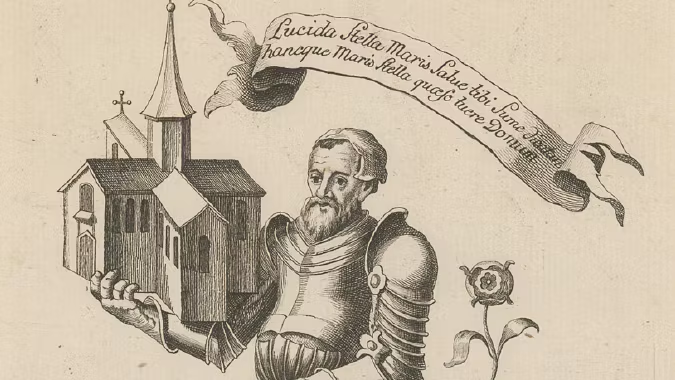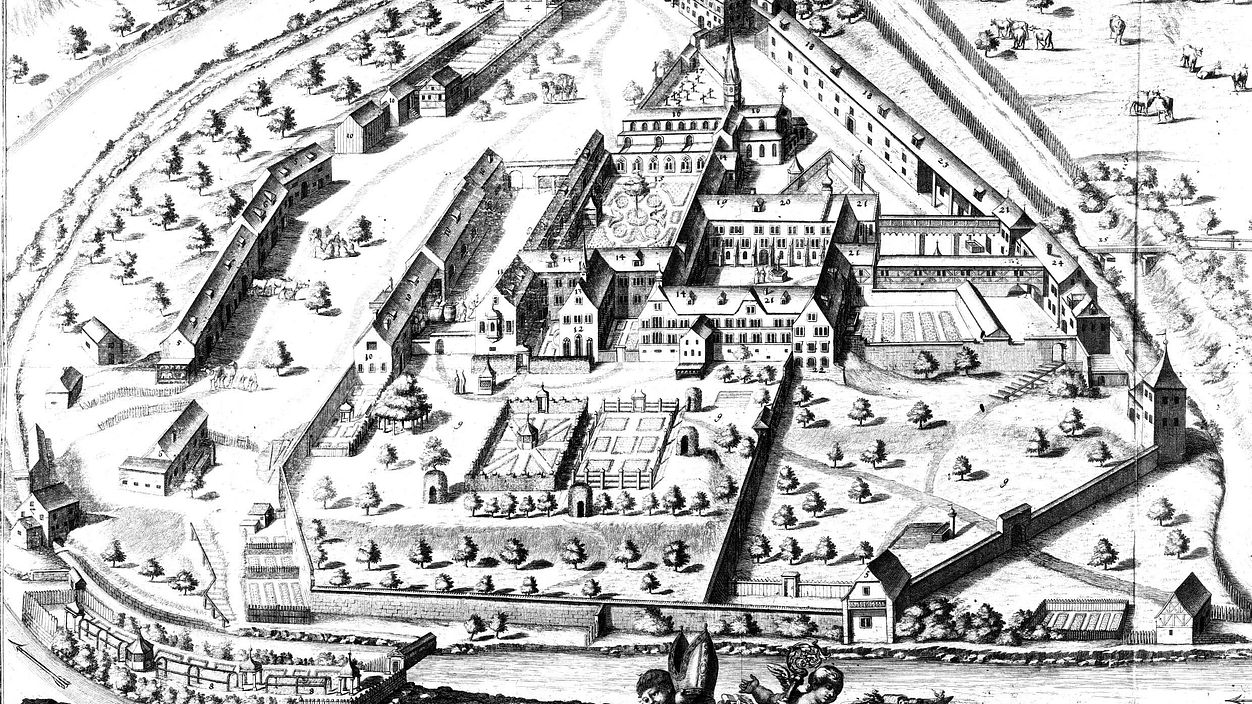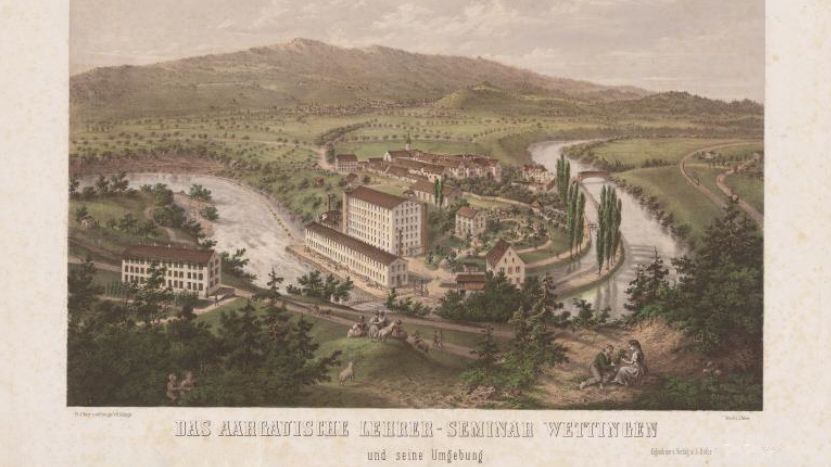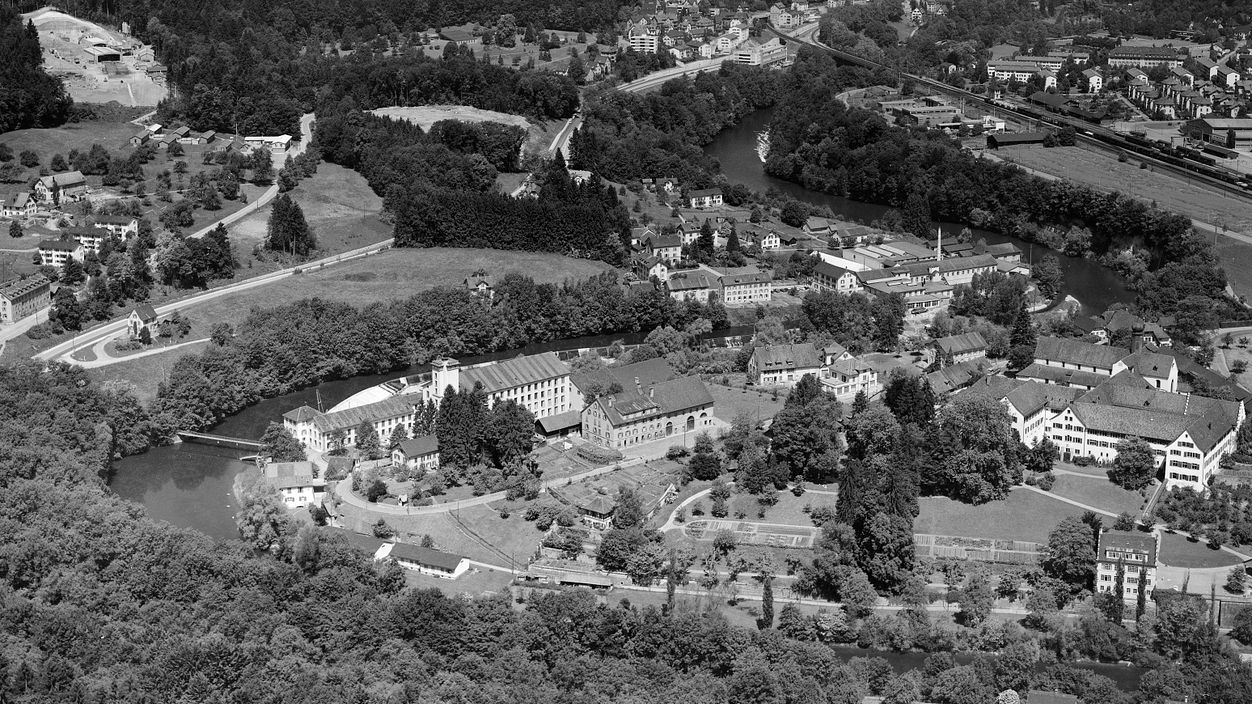Wettingen Abbey
About Museum Aargau
Hauptmenü

The Cistercian Abbey of Wettingen was endowed in 1227 by Heinrich II of Rapperswil. Little is known about its foundation. Legend has it that, in distress at sea he called upon the Virgin Mary for help and promised her an abbey if he was rescued. The storm subsided. A bright star, the Maris Stella, appeared in the sky, which Heinrich interpreted as a sign from Virgin Mary.

Back home, it took him some time to find the place for "his" abbey at the bend of the Limmat river. After the land was purchased from the lords of Dillingen and the Cistercian General Chapter and the Bishop of Constance had given their approval, the abbey was founded.
As usual, a mother abbey was sought, which sent some monks to the new abbey. Thus the first twelve monks came to Wettingen from the abbey of Salem near Überlingen. They began building the abbey complex.
The Cistercian Order emerged from the Benedictine Order in 1098. Some monks were dissatisfied with the development of the Benedictine Order. The Benedictine rules and the guiding principle of "ora et labora" had given way to wealth. First at Molesme, then at Cîteaux, many returned to the origins of monastic life. At the beginning of the 12th century, with the arrival of Bernard of Clairvaux, the Cistercians began to flourish.
In addition to the monks, who devoted themselves primarily to prayer and contemplation, the institution of the converses, also called lay brothers, emerged. Thesey were responsible for the hard physical work in the fields, in the gardens and in the abbey.
The Wettingen monastic community was also divided into these two groups. Often the monks were also ordained priests and responsible for the religious services in the surrounding villages.
Agriculture was an important element of abbey life. Wettingen Abbey had a vegetable garden and a herb garden as well as vines. The abbot had a small private garden built around his house. The quiet cloister garden was a good place to meet for contemplation. Today these gardens have been partially reconstructed and can be visited.
After the abbey was almost completely destroyed by a devastating fire in 1507, monastic life was soon in danger again in 1529 due to the Reformation. Most of the monks converted to the new faith and married. However, until they could be financially independent, they continued to live in the abbey. A monastic life in silence and faith was no longer possible. No sooner did the Catholic monks have "their" abbey back than they were hit by another wave of plague.
Peter Schmid was elected abbot of Wettingen Abbey in 1594. He assumed office determined to help the abbey flourish again. Many new buildings were erected. But he also laid down new rules to bring abbey life back into the community. Good education for the monks was very important to him. After 1651, the two Roman catacomb saints Getulius and Marianus provided the income. This purchase brought pilgrims to Wettingen and with them donations in the form of money.

The outbreak of revolution in France in 1789 ushered in a new era for everyone in Europe. "Egalité, Fraternité, Liberté" was the slogan. Everyone was to have the same rights and duties. The class order of the Middle Ages collapsed. Wettingen Abbey found itself in the middle of the war zone and had to accommodate numerous officers of all warring parties (French, Austrians, Russians).
However, much more drastic was the scepticism of the revolutionaries towards religion. In the 19th century, this scepticism was also widely shared in the young canton of Aargau. The existence of the large and rich abbeys was an affront to many. In 1841, the Grand Council in Aarau resolved to dissolve Aargau's abbeys. Wettingen's monks had 48 hours to leave their home. It took 13 years for the Wettingen Cistercians to find a new home in Mehrerau near Bregenz in Austria. They still live there today.
The abbey buildings were subsequently used as a teacher training college. The greatest advocate of the abbey’s dissolution, Augustin Keller, became rector of the school. He moved into the abbot's apartment and ran the teacher training college with the same rigour as abbey life had been run in the past.
In 1976, Wettingen Cantonal School was founded, and has been housed in the former abbey premises ever since. More than 1,100 students attend either the secondary school or specialised school here.

The canton sold large areas and buildings on the peninsula to businessmen. Johann Wild founded a very successful cotton spinning mill on the Limmat, whose striking building is now used as a cultural and commercial centre. Former workers' houses are still inhabited today.
In addition to the richly decorated church, the cloister with its stained glass of figures and coats of arms is a striking feature. These stained-glass windows were created by outstanding craftsmen in Europe. They mostly came to Wettingen Abbey as a donation.
As of 1 April 2022, Museum Aargau will operate a museum in the exterior and in selected interior rooms. The museum's "School makes museum" project breaks new ground. There is no permanent exhibition to see, but an evolving display with interactive personal mediation of the topics of faith, power and knowledge. Pupils make museum concepts, realise them and carry them out.
